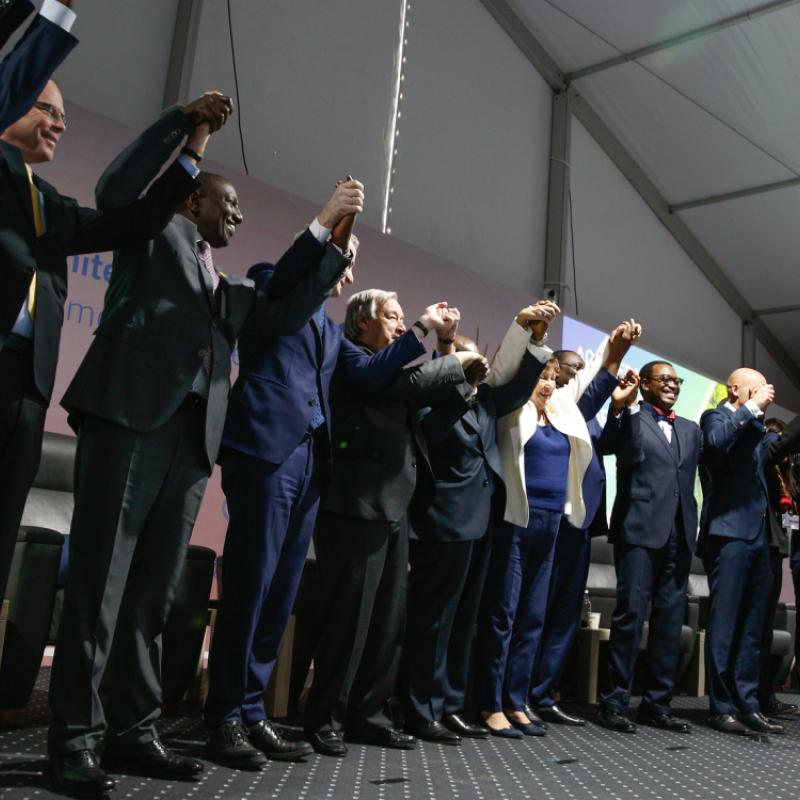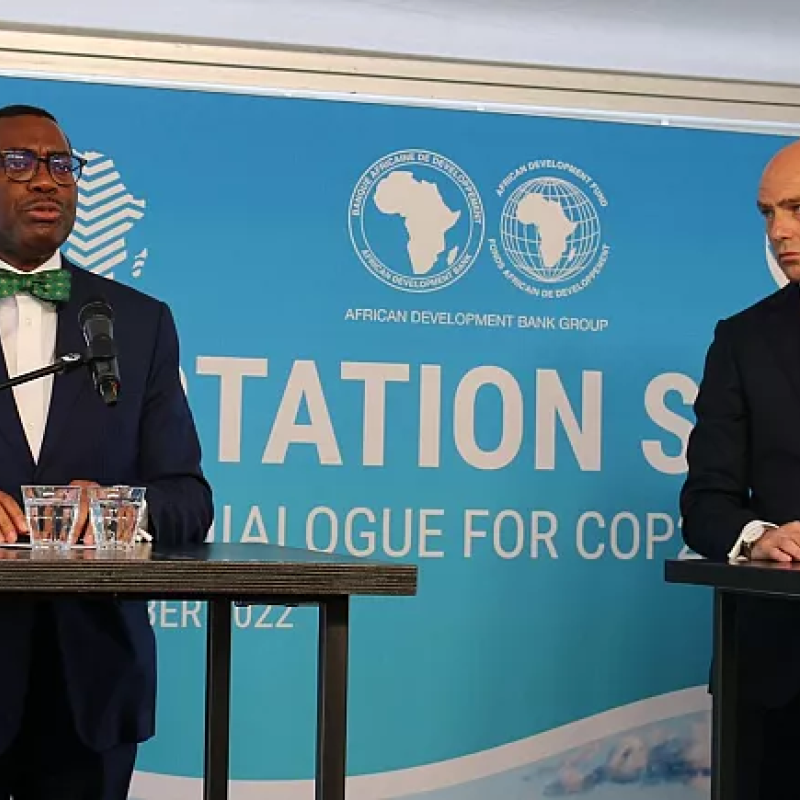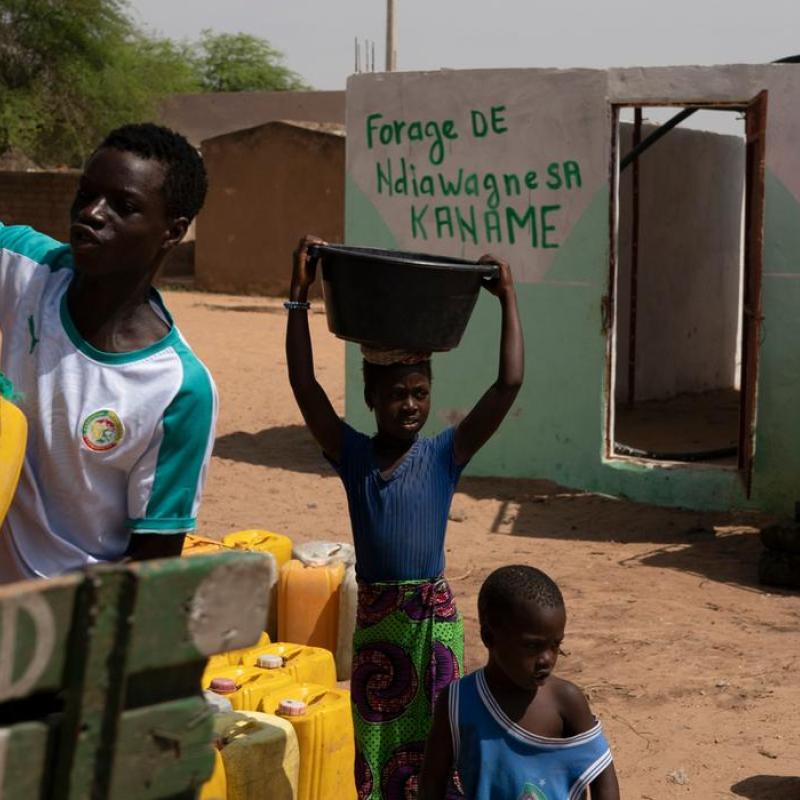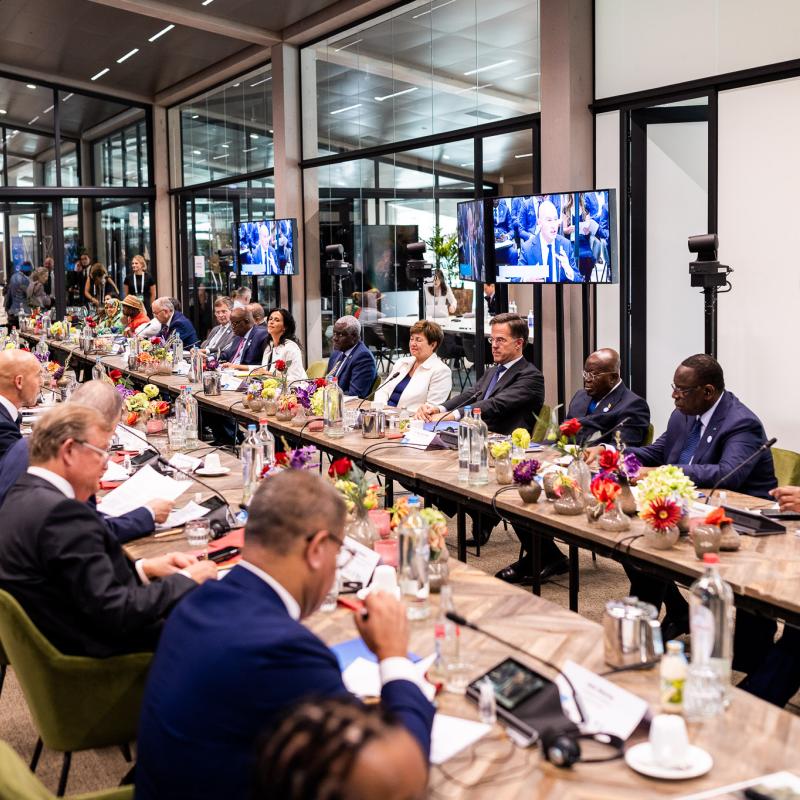
AAAP in the Media
Displaying 1 - 12 of 16
The Gambia: African Development Bank commits grants of $20.56 million to further upgrade Banjul port
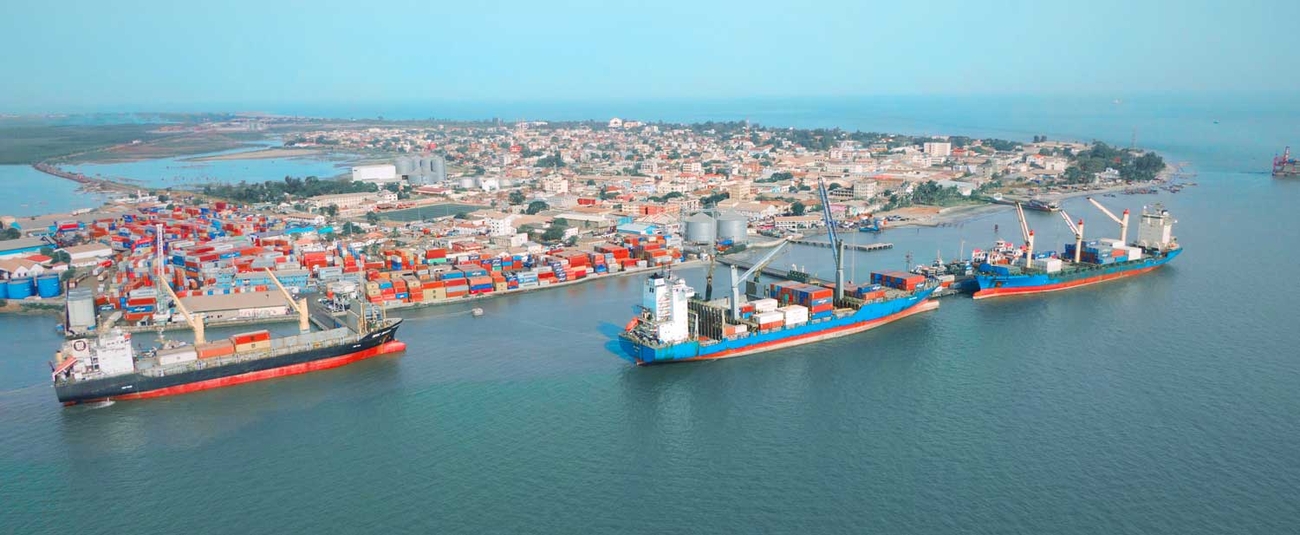
The Board of Directors of the African Development Fund (ADF), the concessional window of the African Development Bank Group, on Thursday approved grants worth $20.56 million to finance the fourth expansion of Banjul Port in The Gambia.
The funding comprises an ADF grant of $13.71 million and another $6.85 million grant from the Transition Support Facility window. The project will also receive a $450,000 grant from the Africa Adaptation Acceleration Programme (AAAP) a joint initiative of the African Development Bank and the Global Centre on Adaptation, for technical assistance to mainstream climate resilience into the expansion. AAAP will use cutting-edge climate analytics to identify and quantify the impacts of physical climate risk on the port infrastructure and provide adaptation investment options to climate-proof it.
The expansion will be financed in parallel with a private investor who will be selected competitively by the Gambian government. The World Bank and the African Development Bank supported the Banjul Port’s previous expansions.
The fourth expansion program entails an extension of the port jetty by 345 meters to accommodate up to three ships simultaneously instead of one currently. It also provides for the expansion of the container terminal area by 22,000 m2 to create space for unloading ships, replacement of a non-functioning ferry plying the Banjul and Bara crossing and widening port access roads by 3km to ease congestion. Information and communication processing systems will also be procured for efficient linkages between customs and the terminal operating system.
Upgrading the port will significantly reduce ship turnaround time and cut costly congestion and surcharges, enabling reductions in sea freight costs and demurrage payments. The works will boost the facility’s capacity to meet growing traffic and improve efficiency in operations and management as it digitizes its procedures. The introduction of green and low-carbon emission ferries will make the port infrastructure more climate-friendly and climate-resilient. The project is also expected to empower women's groups through gender-sensitive procurement and provide jobs, especially for the youth.
At the end of November 2022, the Bank Group had 12 active operations in The Gambia, valued at $166.6 million. Eighty percent (80%) of these are financed through its ADF window. The transport sector represents 55.6% of the portfolio, the largest share, followed by agriculture and rural development with 24%. Energy sector projects constitute 12% of the portfolio.
Contact:
Kwasi Kpodo, Communication and External Relations Department, African Development Bank, email: media@afdb.org(link sends e-mail)
GAMBIA National Transport Risk and Resilience Assessment
Transport systems are a key enabler for trans-sectorial development in The Gambia. The Gambia has a land area that stretches 450 km along the Gambia River, dividing the South and the North banks of the river, and is surrounded by the Senegal except for its 60 km Atlantic Ocean front. The national transport system contributes to geographical integration across the banks of the river and facilitates cross-border Nort-South traffic within Senegal. Strengthening the transport system will therefore also strengthen essential commercial links and reinforce access to social and economic facilities.
The country’s transport system relies on: (i) roads (primary inter-urban trunk roads, secondary gravel surfaces roads, urban roads mainly in the Greater Banjul area), (ii) air transport with the Banjul International Airport, and (iii) maritime and fluvial transport with the Port of Banjul and the river. The Gambia National Transport Policy (2018 – 2027) highlights the key objectives for the development of the transport sector:
- Improving access to Isolated Regions within the country,
- Addressing the mobility needs of the growing population while urbanization rate is increasing,
- Improving integration across transportation modes,
- Reestablishing the river, currently under-utilized, as a backbone component of the National Transport System,
- Overall, reinforcing safety-systems, regulations, institutional capacity fostering transport infrastructure financing and private sector involvement.
The National Transport Policy links investments in transport with other sectoral outcomes around Trade, Agriculture, Tourism, and public / private sector relations policies.
The project aims to quantify transport infrastructure adaptation needs and provide a prioritized and evidence-based list of adaptation and resilience solutions that could be integrated in the upcoming transport infrastructure development investments.
Learning from the implementation in Ghana, the Africa Adaptation Acceleration Program will provide technical assistance to include climate adaptation and resilience solutions in the Integrated Transport Master Plan.
- Data collection and analysis for transport assets and existing services (including spatial data on trade flows, access to healthcare, and other social and economic factors)
- High resolution spatial analysis and climate modelling of transportation infrastructure and expected hazards in different climate scenarios
- Climate Risks assessment with direct and indirect damages caused by projected climate change. This assessment will quantify financial, economic, and social damages, including impacts on women and vulnerable communities.
- Identify, appraise, and prioritize adaptation and resilience options
- Prioritized and financed pipeline of climate resilient transport infrastructure projects in the Gambia
- Identified wins for transport sector investments that can be linked to planned investments
- A strong basis for developing tools and methodologies that can be scaled up more rapidly by other partners, including MDBs
- Assessed and quantified climate risk for transport infrastructure, mentorship, and resources to thrive
- Identified, appraised, and prioritized adaptation and resilience options
- Link the national assessment with MDB investment planning cycles and other downstream investment planning opportunities
3000,000 Euros (AAAP Upstream Facility)
African Development Bank, Global Center on Adaptation host dialogue to look at climate risks facing Gambia’s Port of Banjul Fourth Expansion Project

The African Development Bank and the Global Center on Adaptation hosted a virtual dialogue on Monday last week to discuss climate adaptation related to the Port of Banjul Fourth Expansion Project in Gambia.
The proposed project will increase cargo handling and storage capacity of the terminal in order to cope with increasing cargo volumes and trade.
The dialogue was attended by officials from Gambia’s Port Authority, the National Environment Agency, the National Roads Authority, the Department of Fisheries, the Department of Parks and Wildlife Management, the Department of Water Resources, Maersk Line Gambia, clearing and forwarding agency HM Trading, the Great Institute and civil society. The discussions centered on the climate hazards the Port of Banjul is exposed to, and the impact of these hazards on the Port’s assets, operations, and services.
The African Development Bank and European Investment Bank are considering financing the proposed expansion of the Port of Banjul, estimated at $114 million. To this end, the African Development Bank has committed $531,275 to the Gambia Port Authority to finance a feasibility assessment and investment preparation studies to lay the groundwork for the project.
Within the framework of the Africa Adaptation Acceleration Program (AAAP) – a partnership between the African Development Bank and the Global Center on Adaptation (GCA), GCA is providing technical
assistance worth around €200,000 to mainstream climate resilience into the Expansion Project, utilizing cutting-edge climate analytics to identify and quantify the impacts of physical climate risk on the investment and provide adaptation investment options to climate-proof the investment.
The findings from the climate analytics revealed that climate hazards could lead to cumulative economic damage to the Port of Banjul estimated at $27 million over the next 30 years. This is about 23% of the estimated investment required to upgrade the Port of Banjul. It also emerged that the Port could lose up to 3% of its revenue annually due to the impacts of physical climate risks.
Gambia - Banjul Port 4th Expansion Project
The Banjul Port 4th Expansion Project aims to enhance port infrastructure capacity, facilitate trade facilitation and regional connectivity in the West African sub-region. This regional infrastructure project will enhance economic growth and poverty reduction whilst reducing the transaction costs associated with regional trade. The proposed Banjul Port expansion and modernization Project will also serve as a catalyst for strengthening The Gambia’s position as a major trade and transport corridor hub within the West Africa sub region.
The Port expansion aims to support the economic development of The Gambia, by enhancing its strategic position and competitiveness as a transit and trans-shipment hub in the wider West Africa region.
- Utilizing cutting-edge climate analytics to identify and quantify the impacts of physical climate risk on the investment
- Delivering high resolution climate risks assessments, adaptation and resilience investment options to climate-proof the investment against the impacts of physical climate risks
- Extension of the port jetty by 345 meters to accommodate up to three ships simultaneously instead of one currently
- Provide for the expansion of the container terminal area by 22,000 m2 to create space for unloading ships
- Replacement of a non-functioning ferry plying the Banjul and Bara crossing and widening port access roads by 3km to ease congestion
- Complete and widen the Bund Road access to facilitate traffic flow in and around the access roads leading to the Port of Banjul
- Relocate its current Head Office Complex away from the main operational zone
- Construct a new Container Terminal
- Procurement of Information and communication processing systems for efficient linkages between customs and the terminal operating system
- Significantly reduced ship turnaround time and cut costly congestion and surcharges, enabling reductions in sea freight costs and demurrage payments
- Boost the facility’s capacity to meet growing traffic and improve efficiency in operations and management as it digitizes its procedures
- Climate-friendly and climate-resilient port infrastructure by introduction of green and low-carbon emission ferries
- Empower women's groups through gender-sensitive procurement and provide jobs, especially for the youth
AfDB Investment of USD 44.5 Million of total USD 115 Million
Reinforcing Resilience to Food and Nutrition Insecurity in the Sahel (P2-P2RS)
The Sahel, which lies between the Sahara Desert to the north and tropical savannas to the south, is one of the largest semi-arid/arid sub-regions globally. As such, the region is highly vulnerable to climate change and other uncertainties. The impacts of climate change may have critical socio-economic consequences for the Sahel, including poor agricultural yields, increased frequency of natural disasters. Already, the number of people in the Sahel suffering from chronic food and nutrition insecurity, poverty and vulnerability to the effects of climate change is rising steadily.
A lasting solution to food and nutrition insecurity in the Sahel requires building resilience to climate change, long-term agricultural sector financing and developing trade and regional integration. Sustained, longer-term investments in household resilience can significantly reduce the cost of emergency assistance, ultimately breaking the cycle of recurring famine. This is the most cost-effective intervention option which meets the basic needs and preserves the dignity of the populations of the Sahel. This idea is central to the Programme to Build Resilience to Food and Nutrition Insecurity in the Sahel (P2RS)
The overall objective of the P2-P2RS is to contribute to the substantial improvement of the living conditions and the food and nutritional security of the populations of the Sahel region.
Specifically, the program aims to i) strengthen the resilience to climate change of agro-sylvo-pastoral producers, including through promotion of climate-smart agricultural technologies in the Sahel and the development of climate intelligent villages; ii) develop the agro-sylvo-pastoral value chains, including through the development and improvement of hydro, meteorology and climate services; and iii) support regional institutions (CILSS, APGMV, CCRS) to strengthen adaptive capacity in the Sahel.
- Design digital adaptation solutions (Digital Climate Advisory Services, DCAS) for the Sahel context
- Investment readiness and infrastructure, institutional and farmer capacity needs for DCAS
- Feasibility study to integrate DCAS into agricultural extension and agrometeorological advisory to smallholder farmers and pastoralists
- 1 million rural households have access to digital or data-enabled climate-smart technologies
- 500,000 smallholders have adopted adaptation practices
- 5 million smallholders have access to climate services;
- Development and improvement of hydro, meteorology and climate services
- The development of climate-intelligent villages
- Promotion of climate-smart agricultural technologies in the Sahel
- Resilience to food and nutrition security built for the targeted populations
USD 300 million
Global Leaders Rally Support and Finance for the Africa Adaptation Acceleration Program to Tackle Climate Change in Africa
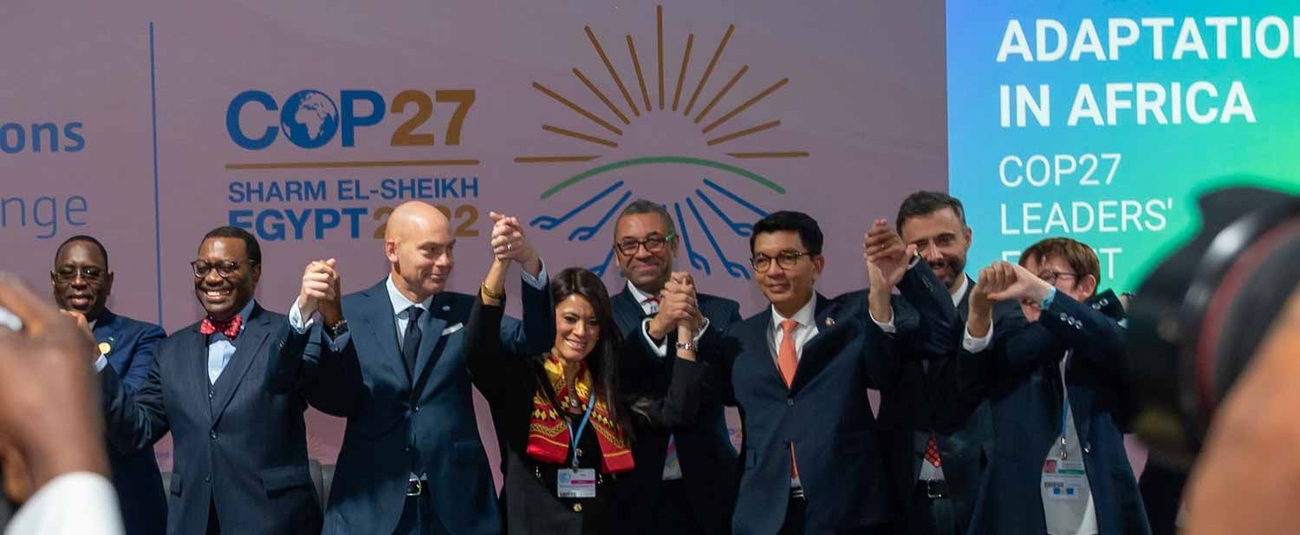
Global leaders on Tuesday rallied around climate adaptation for Africa. They attended the Africa Adaptation Leaders’ Event, convened by African Union Chair President Macky Sall of Senegal, Global Center on Adaptation CEO Patrick Verkooijen, and African Development Bank Group President Akinwumi Adesina.
The event took place at the global climate summit (COP27) in Sharm El-Sheikh, Egypt. It underscored the critical need for climate adaptation in Africa and responded to the call for the capitalization of the Africa Adaptation Acceleration Program (AAAP).
“This is a pivotal step in the fight against climate change,” African Union Chair President Macky Sall said. “The commitments made by Africa’s partners will give the Africa Adaptation Acceleration Program the boost that it needs to transform the development trajectory of the world’s most climate exposed continent. I am confident in the ability of the AAAP to deliver results for Africa.”
The Africa Adaptation Acceleration Program is an Africa-owned and Africa-led initiative developed by the Global Center on Adaptation (GCA) and the African Development Bank (AfDB) in close collaboration with the African Union. It serves as the implementation of the Africa Adaptation Initiative (AAI) to mobilize $25 billion to implement, scale and accelerate climate adaptation across the Africa. Since 2021, AAAP has mainstreamed climate adaptation in over$3.5 billion of investments in 19 countries.
United Nations Secretary-General António Guterres said: “I want to express my total solidarity for the Africa Adaptation Acceleration Program […] I urge the international community to support Africa to mobilize the technical & financial resources for scaling up transformative adaptation.”
“With this innovative program, Africa has developed a plan to grow, create jobs and opportunities for people, and to be resilient against the climate crisis,” said President Akufo-Addo of Ghana. “AAAP’s singular focus on the issue of climate adaptation will also contribute to greater stability and progress in Africa and around the world. AAAP is aligned with Ghana’s plans to address climate change as it chairs the Climate Vulnerability Forum (CVF) to lead efforts from the world’s most climate vulnerable countries to spur and mobilize investment through the Climate Prosperity Plans."
James Cleverly, Secretary of State for Foreign, Commonwealth and Development Affairs of the United Kingdom announced that the UK will provide £200 million to the African Development Bank’s Climate Action Window. This is in addition to the £20 million announced at COP26 in Glasgow to the AAAP Upstream Financing Facility.
Cleverly noted: “Climate change is having a devastating impact on countries in Sub-Saharan Africa facing drought and extreme weather patterns, which have historically received a tiny proportion of climate finance. This new mechanism […] will see vital funds delivered to those most affected by the impacts of climate change, much more quickly.”
Prime Minister Mark Rutte of the Netherlands followed through on the commitment made at the Africa Adaptation Summit held at the Global Center on Adaptation in September to confirm that the Netherlands will contribute EUR110 million to the AAAP, with EUR10 million in support for the Upstream Financing Facility hosted by GCA and EUR 100 million for the Climate Action Window of the African Development Fund at the African Development Bank as part of the Netherlands’ commitment to dedicate half of its climate funding, fully grant based, to climate adaptation, with a focus on Africa.
Norwegian Prime Minister Jonas Gahr Støre echoed African leaders’ calls for countries to rapidly scale up finance for climate adaptation, stating: “The climate crisis is here and now. Years of progress are at risk.”
“The AAAP Upstream Financing Facility is the delivery mechanism of adaptation and will use millions to leverage the billions that is required for adaptation,” he continued. “AAAP projects will generate effective climate adaptation outcomes. Adaptation is a growth agenda. A jobs agenda. And a prosperity agenda. On behalf of Norway, I am looking forward to continuing this partnership, investing in it, and supporting it with the Global Center on Adaptation.”
International Monetary Fund Managing Director Kristalina Georgieva emphasized the need to accelerate adaptation in Africa, stating: “It is paramount to support Africa’s adaptation because Africa will not reach its tremendous potential without it. AAAP complements the IMF’s Resilience and Sustainability Trust, which helps countries address external shocks such as climate change and ensure sustainable growth that can give Africa a chance to leapfrog outdated development models.”
African Development Bank Group President Dr. Akinwumi Adesina said: “Africa is suffering from the devastating effects of climate change. Our continent is being short changed by climate finance. The contributions towards the Africa Adaptation Acceleration Program’s Upstream Financing Facility and the Climate Action Window – which the African Development Bank manages – will help capitalize the program. With increased capital, we can better deliver the investment needed to bridge the adaptation finance gap. We want to ensure that the most vulnerable communities can benefit from a sustainable and prosperous future.”
Endorsing the outcomes of the high-level meeting, Patrick Verkooijen, CEO of the Global Center on Adaptation, closed with a statement emphasizing the AAAP’s impact to date, noting that “there is no pause button on the climate crisis. Africa must adapt to the threat of climate change, and it must adapt now.”
“Through the AAAP,” he continued, “Africa has charted its path towards a climate-resilient future for its youth, its economic growth, and for its prosperity.”
About the Global Center on Adaptation
The Global Center on Adaptation (GCA) is an international organization which works as a solutions broker to accelerate action and support for adaptation solutions, from the international to the local, in partnership with the public and private sector, to ensure we learn from each other and work together for a climate-resilient future. Founded in 2018, GCA is hosted by the Netherlands, working from its headquarters in Rotterdam with a knowledge and research hub based in Groningen. GCA has a worldwide network of regional offices in Abidjan, Côte d’Ivoire, Dhaka, Bangladesh and Beijing, China. Through this evolving network of offices and global and regional GCA teams, the organization engages in high-level policy activities, new research contributions, communications, and technical assistance to governments and the private sector.
About the African Development Bank
The African Development Bank Group is Africa’s premier development organization. Its overarching objective is to spur sustainable economic development and social progress in its regional member countries, thus contributing to poverty reduction across the continent.
The Bank Group achieves this objective by mobilizing and allocating resources for investment in African countries and providing policy advice and technical assistance to support development efforts.
In 2015, all multilateral development institutions agreed on the same set of objectives, the United Nations Sustainable Development Goals.
Learn more: https://www.afdb.org/
About the Africa Adaptation Acceleration Program
The Africa Adaptation Acceleration Program (AAAP) is a joint initiative of the African Development Bank and the Global Center on Adaptation (GCA). It aims to mobilize $25 billion, over five years, to accelerate and scale climate adaptation action across the continent. This ambition is delivered through the AAAP Upstream Financing Facility managed by the Global Center on Adaptation and the African Development Bank’s climate action window in the ADF replenishment. AAAP works across four pillars to achieve transformational results: Climate-Smart Digital Technologies for Agriculture and Food Security; African Infrastructure Resilience Accelerator; Youth Empowerment for Entrepreneurship and Job Creation in Climate Adaptation and Resilience and Innovative Financial Initiatives for Africa. AAAP has already guided over $3.5 billion of upstream investments in 19 countries with every dollar spent influencing $100 downstream.
COP27 - COP27 Leaders' Event, Accelerating Adaptation in Africa (DAY 2)
African and other global leaders meeting in Rotterdam say the continent is at a tipping point for climate adaptation action
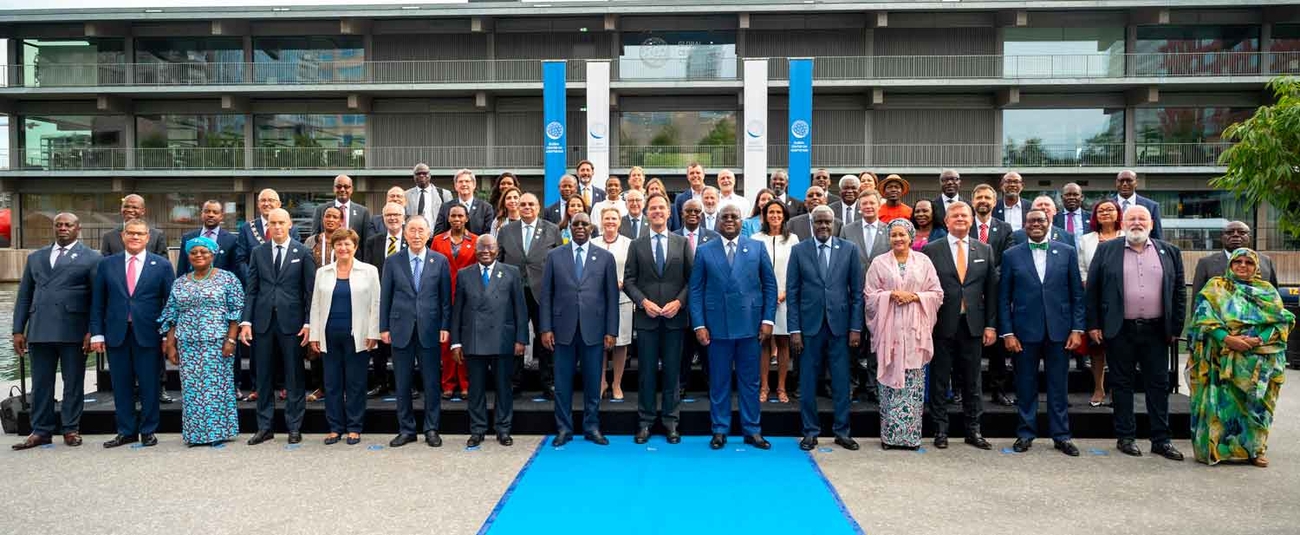
Two months to the 27th global climate summit (COP27) in Sharm El-Sheik, Egypt, African and other global leaders have rallied in Rotterdam, to highlight the urgency of climate adaptation funding for the continent.
The meetings—co-convened by the President of the African Development Bank Group Dr Akinwumi Adesina, CEO of the Global Center on Adaptation (GCA) Professor Patrick Verkooijen, and African Union Commission Chair Mousa Faki Mahamat—was unanimous about the need for concrete action and finance.
Former UN Secretary General Ban Ki-moon and GCA Co-Chair said: “The world has a fever. It burns hotter and higher with every day that passes… Statistics tell us that Africa is where the fever is at its most intense and people at the most vulnerable.”
GCA Co-Chair and Honorary Chairman of Royal DSM Feike Sijbesma spoke about the importance of support from the global private sector. He said 80% of the funding for adaptation needs to come from the private sector in both the developed north and the developing south.
GCA Chief Executive Officer Patrick Verkooijen emphasized the disastrous impacts of climate change hitting all parts of the world. He said it is in Africa, however, that climate shocks will hit the hardest. He said Africa was resolute about its economic advancement and would not stop. “Adaptation in Africa is like climbing a mountain. With all of you here today, we have the dream team that will climb the mountain together.”
Verkooijen added: “The next summit after today is Sharm El-Sheikh, the Africa COP. But success in Egypt will hinge on whether Africa’s needs are met or not. Africa has the commitment and the plan. That plan is the Africa Adaptation Acceleration Program (AAA-P). It is Africa-developed and Africa-owned. It was launched by Africa’s leaders, who are here today. It is the vehicle for delivering the Africa Adaptation Initiative.”
Established in 2020 by the GCA and the African Development Bank, the Africa Adaptation Acceleration Program lies at the center of climate action on the African continent. Participants acknowledged Verkooijen’s and Adesina’s joint efforts as the driving forces behind the program.
African Union Chairperson, President Macky Sall of Senegal, President Nana Akufo-Addo of Ghana, who is Chair of the Climate Vulnerable Forum, and President Felix Tshisekedi of the Democratic of the Congo conveyed a unified message: the international community must deliver on its pledge to double adaptation finance and to scale adaptation action for Africa.
President Sall expressed disappointment at the absence of industrialized country leaders at the summit. The African Union Chair said if African leaders could be in Rotterdam in person to discuss such a crucial issue as climate adaptation in Africa, the very least they expected was that their European counterparts—whose countries are among the world’s biggest polluters—would also have been present at the summit.
This sentiment was shared by Presidents Akufo-Addo and Tshisekedi, African Union Commission Chairperson Moussa Faki Mahamat and UN Deputy Secretary General Amina Mohammed, among others. Mohammed said: “A bird only flies with two wings, and the representation at this table is lopsided.”
The UN deputy chief added that it was not Africa’s fault that it is in its current position, given that it contributes very little to global carbon emissions. She pondered on what the situation would have been if the roles had been reversed. Mohammed said the COP26 Glasgow pact was at risk of failing if the developed world did not make good on its promises of delivering $100 billion a year for climate action in developing countries.
In his intervention(link is external), Adesina reminded participants that the African continent was warming faster than any other region of the world, as predictions from the Intergovernmental Panel on Climate Change show that the critical global warming levels will be reached much earlier in Africa.
The African Development Bank chief explained that in the face of the deluge, Africa does not have the resources to tackle climate change. He said the continent receives only 3% of global climate financing. He noted that if this trend continued, Africa’s climate financing gap could reach between $100 billion to $127 billion per year through 2030.
Adesina said: “The current climate financing architecture is not meeting the needs of Africa. New estimates by the African Economic Outlook of the African Development Bank show that Africa will need between 1.3 and 1.6 trillion dollars from 2020 to 2030, or $118 billion to $145 billion annually to implement its commitments to the Paris Agreement and its nationally determined contributions.”
The African Development Bank chief said the African Adaptation Acceleration Program’s upstream facility at the GCA had already helped to generate $3 billion of mainstreamed climate adaptation investments by the African Development Bank, from agriculture to energy, transport, water, and sanitation.
Adesina spoke of the African Development Bank’s African Development Fund (ADF), its concessionary lending arm as one of the ways to address the climate financing gap. He said the 16th replenishment of the fund, currently underway, presented a unique opportunity for full financing of the $12.5 billion in financing for the Africa Adaptation Acceleration Program.
The African Development Bank chief explained that the African Development Fund had introduced a Climate Action Window that would hopefully mobilize $4 billion to $13 billion for climate adaptation for the Fund’s member countries. “This will be used to support 20 million farmers with access to climate resilient agricultural technologies, access of 20 million farmers and pastoralists to weather-indexed crop insurance, reviving 1 million hectares of degraded land, and provision of renewable energy for about 9.5 million people.
Adesina said commitments by developed countries to provide $100 billion annually in climate finance for developing countries was long overdue. “Africa cannot wait,” he emphasized. “This is the time to support the Africa Adaptation Acceleration Program. This is the time to support the ADF 16th replenishment. This is the time to support the Climate Action Window of ADF-16.”
World Trade Organization Director General Ngozi Okonjo-Iweala also lent her voice to the clarion call for additional resources for Africa adaptation funding. Speaking about the role of trade in climate adaptation, she said trade policies should be integrated into global climate action as an amplifying force for financing and other climate-related support provided to vulnerable economies.
The summit’s five-point Communique(link is external) highlighted that Africa was at a tipping point. It emphasized that success at COP27 will depend on whether the needs of Africa, the world’s most climate-vulnerable continent, are met with finance flowing into such key country-led adaptation programs as the Africa Adaptation Acceleration Program.
GCA Co-Chair Feike Sijbesma said in closing: “Investments in global climate adaptation cooperation are a big opportunity for countries like the Netherlands to share some of our best innovations with those who need them the most. The AAAP will be a crucial vehicle for triggering far greater business investment across Africa into green and resilient solutions. This is a collective effort, we need every sector, every contribution possible to see off the climate crisis in Africa, and the private sector, in particular, has a massive role to play.”


